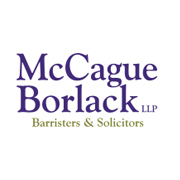Adverse costs insurance can be purchased at any point in the litigation after a claim has been filed. Coverage is typically around $100,000 but can range anywhere between $25,000 and $250,000 in personal injury cases, depending on the projected cost of litigation. Insurers and underwriters evaluate the file's potential to succeed before issuing a policy. Given the sums involved in such policies, coverage is generally limited to litigation that is considered highly likely to succeed and where the defendant has sufficient funds to pay costs.
The policyholder may be the plaintiff or the plaintiff's law firm. As with any type of insurance, the plaintiff or the plaintiff's law firm pays a premium. While insurers set their own premium rates, generally, premiums are set according to risk. Therefore, the higher the risk involved in taking the case to trial, the higher the premium. Risk (and therefore, premiums) may increase as the parties get closer to trial. Policy terms can vary from case to case, and from insurer to insurer. Some policies will cover adverse costs for motions, whereas others will strictly insure within the confines of litigation through to trial.
If the plaintiff loses at trial, adverse costs insurance covers costs payable to the winning side (including defence legal fees) and the plaintiff's own disbursements, up to the limit that has been selected. However, adverse costs insurance does not cover the plaintiff lawyer's legal fees. In Ontario, insurers do not typically obtain a percentage of the winnings, but rather collect the premium agreed upon at signing. In rare cases, the insurer may collect its premium at the conclusion of the matter.
Adverse Costs Insurance as a Disbursement
The Ontario Superior Court of Justice in Markovic v Richards et al., 2015 ONSC 6983, was the first decision addressing adverse costs insurance as a disbursement. Justice Milanetti held that adverse costs insurance was not a payable disbursement by the defence:
[7] ... Existence of the policy may well provide comfort to the plaintiff, it is, however, an expense that is entirely discretionary, does nothing to advance the litigation, and may, in fact, even act as a disincentive to thoughtful, well-reasoned resolution of claims...
This decision was cited by a number of Ontario Superior Court decisions holding that such premiums should not be reimbursed by the defendant as a compensable disbursement: Valentine v Rodriquez-Elizadle, 2016 ONSC 6395; Little v Floyd Stinton Limited, 2018 ONSC 3165; Foster v Durkin, 2016 ONSC 684.
However, in Armstrong v Lakeridge Resort Ltd., 2017 ONSC 6565, Justice Salmers reasoned that the costs of litigation were large and without access to adverse costs insurance, plaintiffs may be “afraid” to pursue claims. In allowing adverse costs insurance as an assessable disbursement, Salmers J. disagreed with the reasoning in Markovic, supra:
Relying on Markovic v. Richards, 2015 ONSC 6983 (Ont. S.C.J.) (CanLII), defence counsel submitted that the plaintiffs' disbursement for costs insurance should not be allowed. With respect, I disagree. In this case, the costs of advancing even the claims on which the plaintiffs were successful were extremely large. Also, in general, even the strongest claim of a plaintiff may not be successful depending on how the evidence comes out and how it is perceived by a trier of fact. Without costs insurance, the fear of a very large adverse costs award would cause many plaintiffs of modest means to be afraid to pursue meritorious claims. It is in the interests of justice that plaintiffs be able to pursue meritorious claims without fear of a potentially devastating adverse costs award. Additionally, I am satisfied that it was reasonable for the plaintiffs to have advanced their claims as they did because there were genuine triable issues on all claims that were advanced. Accordingly, the claim for the costs insurance premium will be allowed.
In Stewart et al., v Wood et al., 2019 ONSC 3931, Justice Tausendfreund endorsed the reasoning in Armstrong, holding that adverse costs insurance directly impacts access to justice. Notably, the Court held that there are conflicting decisions as to whether adverse costs insurance is an assessable disbursement:
[23] ... The Defendants state that it is settled law that such an insurance premium is not a recoverable disbursement. I disagree. There are conflicting opinions on this issue. Milanetti, J., Reilly, J. and Firestone, J. respectively in Markovic v. Richards, 2015 ONSC 6983 (Ont. S.C.J.), Foster v. Durkin, 2016 ONSC 684 (Ont. S.C.J.) and Valentine v. Rodriguez-Elizalde, 2016 ONSC 6395 (Ont. S.C.J.) each held that the premium for adverse costs insurance is not to be reimbursed by the Defendants as a compensable disbursement. I then turn to Armstrong v. Lakeridge Resort Ltd., 2017 ONSC 6565 (Ont. S.C.J.). Salmers, J. in that decision held that the costs insurance premium was a compensable disbursement. Salmers, J. noted at para 21:
"Without costs insurance, the fear of a very large adverse costs award would cause many Plaintiffs of modest means to be afraid to pursue meritorious claims. It is in the interests of justice that Plaintiffs be able to pursue meritorious claims without fear of a potentially devastating adverse costs award."
[24] I find adverse costs insurance to be an "access to justice" issue. For that reason, I hold it to be a compensable disbursement to be included as a costs obligation payable to the Plaintiffs.
The above-noted decisions reveal that the law as to whether adverse costs insurance is an assessable disbursement is not settled. On one side, the Superior Court has held that adverse costs insurance is an access to justice issue, while the other has held that adverse costs insurance does nothing to advance litigation and may even be a barrier to the settlement of claims.
At the time of this paper, the Ontario Court of Appeal has not weighed in on the issue. Due to the rising prevalence of adverse costs insurance, it is likely a matter of time before the Ontario Court of Appeal issues a decision. Until then, based on the conflicting decisions, both plaintiffs and defendants alike cannot be sure whether at the conclusion of the matter the premium should be an assessable disbursement.
Disclosure of the Policy
The production of an insurance policy is commonplace in most actions under which insurance is available to satisfy a judgement. In fact, the Rules of Civil Procedure specifically denote that a party has to produce an insurance policy under certain circumstances:
Insurance Policy
(3) A party shall disclose and, if requested, produce for inspection any insurance policy under which an insurer may be liable,
(a) to satisfy all or part of a judgment in the action; or
(b) to indemnify or reimburse a party for money paid in satisfaction of all or part of the judgment,
but no information concerning the insurance policy is admissible in evidence unless it is relevant to an issue in the action. R.R.O. 1990, Reg. 194, r. 30.02 (3).
Abu-Hmaid v Napar, 2016 ONSC 2894 was the first reported decision deciding the production of an adverse costs insurance policy. The Court held that the purpose of Rule 30.02(3) was to avoid plaintiffs incurring substantial costs in obtaining “practically worthless” judgements that were in excess of any available insurance coverage. However, adverse costs insurance is an entirely different “category of liability”, one that does not apply to Rule 30.02(3).
Applying proportionality together with Rule 1.04(2), Master Short held that the policy is relevant to the action, but the details of the policy are not. As such, Master Short held that the existence of the policy must be disclosed to the defence, however, the plaintiff was not obligated to disclose any further details of the policy.
Nearly one year later, Justice Grace in Fleming v Brown, 2017 ONSC 1430, reached the opposite conclusion. The Court held that the disclosure obligations under Rule 30.02(3) applied to the disclosure of adverse costs insurance. In support of the Court's decision, it relied on the Ontario Court of Appeal decision Sabatino v Gunning, 50 O.R. (2d) 171, which discussed the purpose of Rule 30.02(3):
[11] If I am right in my conclusion that in determining the scope of its application, each rule and subrule must be looked at in terms of its own particular function or purpose within the overall scheme of the Rules, the question remaining to be decided is what seen purpose is [sic] subr. 30.02(3) intended to serve within that scheme. In my opinion that purpose, briefly stated, is to assist the making of informed and sensible decisions by parties involved in litigation, in circumstances where the extent, if any, to which recourse can be had by one or more of the parties to any available insurance moneys in the event of their eventual success in the litigation may play a major and even a determinative role in how the litigation is conducted, and through what stages it should be pursued.
As such, Justice Grace held that Rule 30.02(3) was triggered and ordered the plaintiff to produce the policy.
However, in cases where the policy is issued to the plaintiff's firm rather than to the plaintiff, the Superior Court in Jamieson v Kapashesit et al., 2017 ONSC 5784 and Robichaud et al., v Constanrinidis et al., 2020 ONSC 310, has held that Rule 30.02(3) does not apply. The reasoning is grounded in the fact that the policy is not in the possession, control, or power of the plaintiff, and does not trigger the disclosure obligations per the Rules of Civil Procedure.
Following the decisions in Jamieson and Robichaud, supra, Master Robinson in James v McGuire, 2020 ONSC 914 was tasked with the issue again, of whether a policy in the plaintiff's firm name was producible. Master Robinson endorsed an argument by the defence that there is an interrelatedness between a policyholder of an insurance policy, the named insured under that policy, named additional insured, and potentially unnamed additional insureds. Master Robinson noted that the Court in Jamieson and Robichaud had not considered this. However, because of the facts presented in the case at bar, Master Robinson noted that he was bound by those decisions:
[17] In my view, there is merit to the distinction argued by the defendants between the policyholder of an insurance policy, the named insured under that policy, named additional insured, and potentially unnamed additional insureds. Those distinctions do not appear to have been argued before the court in either Jamieson or Jamieson,. I also agree that, while the declarations page for the ACP in evidence (which appears to be partially redacted but is not stated to be so) confirms that the policyholder of the ACP is the law firm, there is no evidence of how insureds are defined, what persons are covered or how coverage works under the ACP.
[18] However, my views on the merits of these nuanced arguments do not change the disposition of this motion. I am bound by Jamieson and Robichaud. I do not find any facts in this case upon which to distinguish either of those decisions. The facts of this case are substantially the same. The ACP is held in the name of the law firm, not the plaintiff, is a blanket insurance policy that, per the declarations page, continues for an indeterminate period into the future, and appears to apply to the personal injury caseload of all the lawyers in the law firm. As extracted above, Justice Schabas expressly held that "where the policyholder is the law firm and not the 'party', Rule 30.02 does not apply" (emphasis added). That is precisely the case here. The policyholder is the law firm, not the plaintiff.
As such, as the law currently stands, a plaintiff will be required to disclose the existence of a policy if the plaintiff is a named insured. However, if the policy is in the name of the plaintiff's law firm, based on the above decisions, it will not be producible.
Having said that, Master Robinson in James, supra, insinuated that both Jamieson and Robichaud may have been reached in error. Moving forward, it will likely take appellate intervention in order to settle whether a policy in a firm's name is producible.
Litigation loan details broken down by province or state are available in chart format for download in both Canadian & USA versions.


